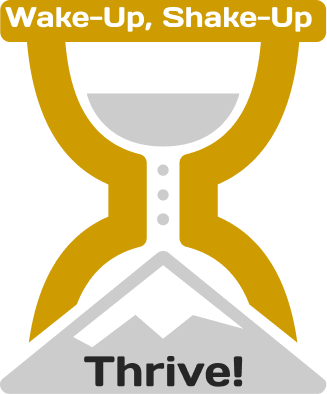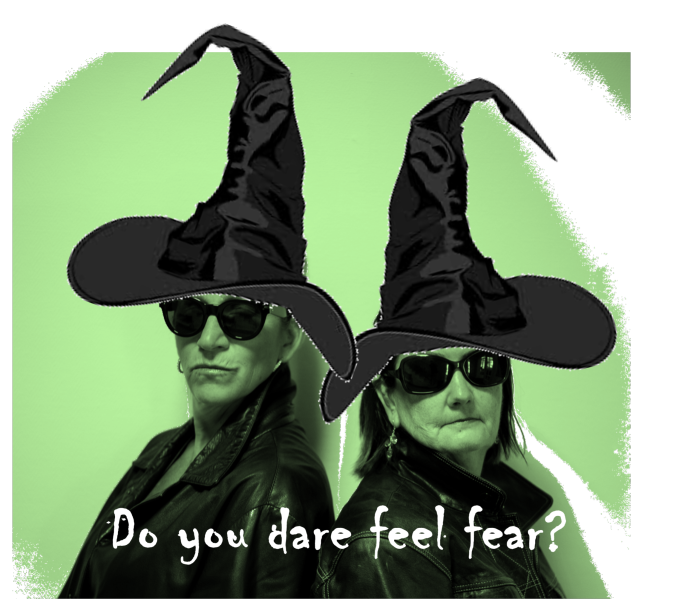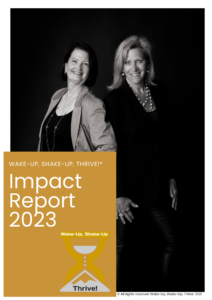October has become associated with scary and spooky themes for cultural and historical reasons including Halloween, All Saints’ Day, seasonal changes, harvest traditions, and various celebrations that mark the end of the growing season. October might be the best time to embrace the emotional thrill of fear and celebrate some mysterious aspects of life. Discover here how tapping into your emotions — and even a little fear — can help you age better!
“Emotions are like fine wine; they grow richer and more complex with age.” —Unknown
Wake-Up!
Emotions, especially positive emotions, can play a significant role in how we age and how well we navigate the challenges that come with aging. Here’s why:
1) Improved Physical Health: Positive emotions have been linked to better cardiovascular health, a stronger immune system, and lower inflammation levels. These factors can contribute to better overall physical health as we age.
2) Brain Function: Positive emotions have been shown to enhance brain function and memory. They can help maintain better mental clarity and reduce the risk of cerebral decline associated with aging.
3) Social Connection: Positive emotions can enhance social bonds and encourage meaningful connections with others. Social support and strong social networks are crucial for emotional well-being and a sense of purpose in life.
4) Resilience: Positive emotions can foster resilience and the ability to cope with life’s challenges, including those associated with aging, such as loss, health issues, and changes in lifestyle.
5) Enhanced Well-Being: Positive emotions are linked to higher levels of overall well-being and life satisfaction. Emotionally balanced individuals tend to have a higher quality of life as they age.
“Fear is not your enemy. It is a compass pointing you to the areas where you need to grow.” — Steve Pavlina
Shake-Up!
Beyond the positive ones, emotions that are not necessarily considered positive, like fear, can also play a paradoxical role in promoting longevity when appropriately managed and harnessed. Fear can be considered positive or beneficial in certain situations when it serves as a protective mechanism or motivates us to take appropriate actions. Here are some ways fear can contribute to longevity:
1) Prompting regular health check-ups: Fear of illness or the unknown can drive people to seek medical advice regularly, leading to early detection and treatment of potential health issues. Regular check-ups can prevent small problems from becoming more serious and thus contribute to a longer life.
2) Promoting self-preservation: Fear of death or harm motivates us to take steps to protect ourselves and stay safe. This includes things like wearing seatbelts, avoiding reckless behavior, and taking necessary precautions, all of which can increase our chances of living longer.
3) Avoiding dangerous situations: Fear helps us recognize potential threats and encourages us to take precautions. For example, if we fear the risk of injury or illness, we may be more likely to avoid dangerous activities or adopt healthier habits, which can contribute to a longer and healthier life.
4) Encouraging healthy behaviors: Fear of the consequences of unhealthy habits, such as smoking, excessive drinking, or a poor diet, can motivate people to make positive lifestyle changes. Adopting healthy habits like regular exercise, a balanced diet, and stress reduction can lead to improved longevity.
5) Learning and Growth: Fear can push us out of our comfort zones and challenge us to overcome obstacles. It can be a driving force for personal growth and development, encouraging us to face fears and achieve our goals — which we learned last month contributes to longevity.
Thrive!
(from our book “Wake-Up, Shake-Up, Thrive”)
Don’t be afraid of negative emotions… embrace them and use them to cultivate positive emotions and age better…
This daily mental workout will help you notice and name your emotions so you can take a step back and make choices about what to do with them.
- Throughout your day and week, refer to the list of emotions below. Notice your emotion at the moment
- Then, describe or name it — whether to yourself or out loud. For example, saying mentally ‘I’m feeling fearful or ‘I feel loved’. By putting your attention on words, your executive brain will take over and calm down your emotional limbic brain
- Calmly linger over your emotions to give your executive brain time to filter and organize your reactive emotions
- Now you have a greater capacity to choose your response in the moment
- It’s important to build your capacity to be with your emotions. If not, you may become fearful of them, especially negative ones, and shut them down. The cost of restricting your emotions can lead to shutting down all emotions, including positive sources of joy and pleasure.
Non-Exhaustive List of Emotions… choose yours…
Afraid Amazed Surprised Astonished Entertained Distracted Furious Mad Angry Frustrated Annoyed Sad Scared Pensive Discouraged Excited Happy Joyful Included Disgusted Fearful Worried Loved Relieved Satisfied Lonely Disappointed Lost Miserable Anxious Terrified Panicked Bitter Insulted Uncomfortable Proud Recognized Rewarded Amused
P.S. Some emotions may be similar, yet not exactly the same. Try to be specific. If you feel short of vocabulary and want this exercise to have more impact, many interesting inventories can be found online. Be curious!
It’s essential to acknowledge that negative emotions are also a natural part of life. While positive emotions can have many benefits for aging well, it’s crucial to recognize and address negative emotions when they arise. The key is to strike a balance and use fear as a tool to promote positive behaviors and avoid dangerous situations, while also managing it in a healthy way. Also, recognize that fear is a natural emotion and can vary in intensity and impact from person to person.
Understanding and managing fear can lead to personal growth and a longer, more fulfilling life. To discover more about your emotions, upload the first 2 chapters of our book HERE. If you’d like to explore emotions in the professional setting, let’s book a wake-up session!
“Fear is a call to courage; it’s like a beacon drawing us toward the very thing we’re afraid of.”
— Elizabeth Gilbert



